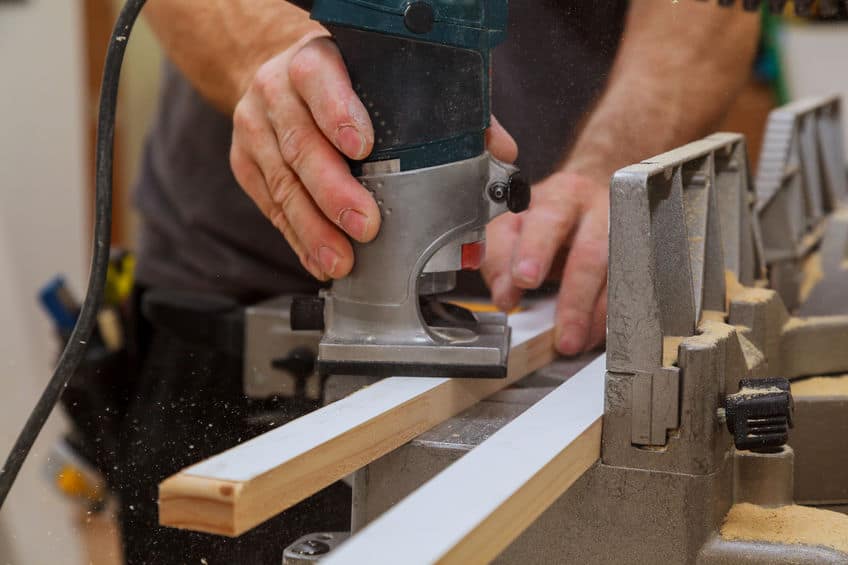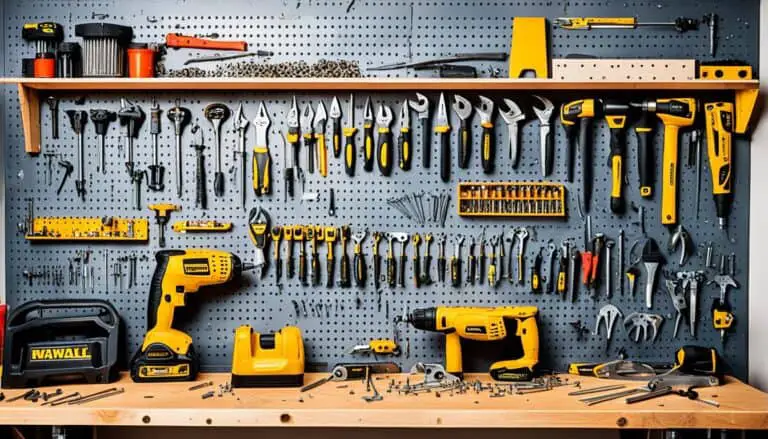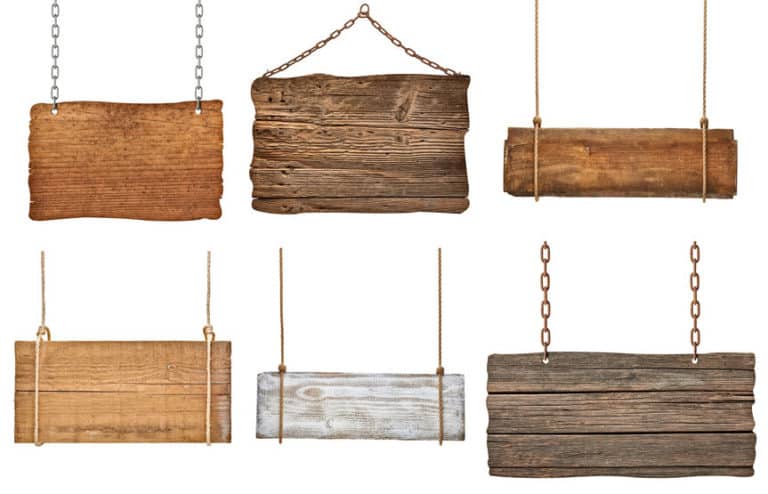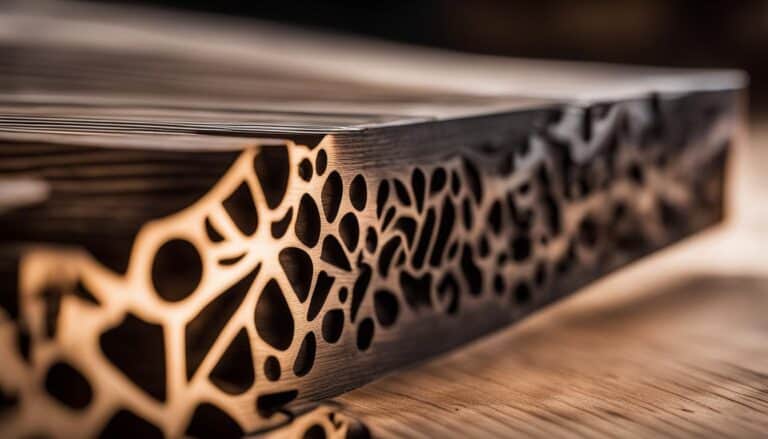When considering what wood router for signs making you have a variety of choices and options. You may be asking yourself which one is better. You may also be asking which one is the most cost-effective. During my research, I have come across many different models. They all have their pros and cons however I was more interested in knowing what was the best for the purpose of making wood signs.
Making the decision on what router for signs making is the best you need to look at the purpose your need a router first. Each router on the market provides solutions ranging from cordless to more or less power. Additionally, they offer different sizes and different mounts. Choose the best for you.
The frustration of looking at a wood router for wood signs is all the options, opinions, and different costs. Which router can be a daunting task, especially if you are just starting out and need to focus on a specific project or type of wood sign. Let’s look at all of these considerations and help you make a better-educated decision to get the best bang for your buck.
What Are The Different Types Of Wood Routers?
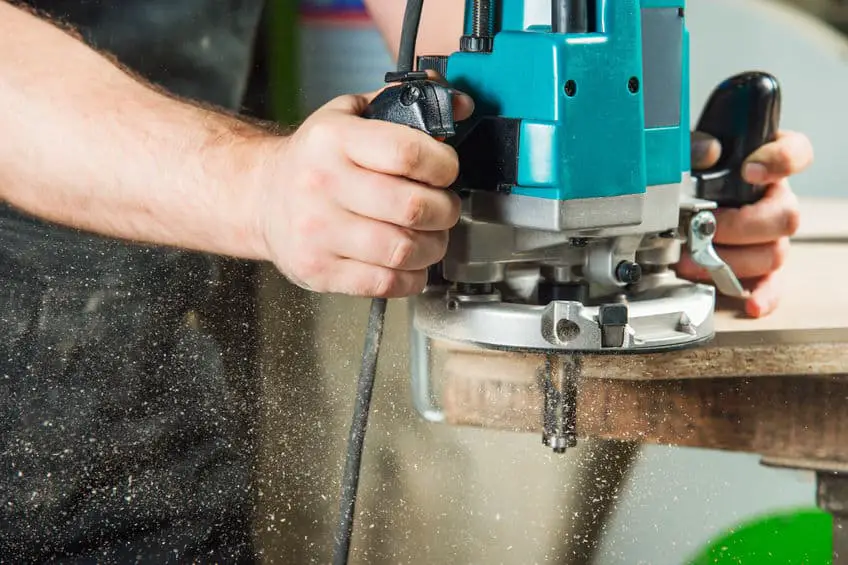
According to wikipedia – A router is a hand tool or power tool that routs (hollows out) an area in hard material, such as wood or plastic. Routers are mainly used in woodworking, especially cabinetry.” Following this ideology, we can take away the idea that the router is a multipurpose power tool that would benefit you to have wood signs as well.
Knowing the generic description helps us look at the more specifics of the different types for what router for signs making there are. Much like a lot of the power tools in the woodworking realm the router is diverse and can be tailored to meet your wood sign-making needs.
Main Types Of Wood Routers
Most of your routers purchased from your local hardware for woodworking and making wood signs come in two types, Plunge and Fixed.
Plunge Wood Router – Plunge routers are routers inserted into a plunge device (removal most of the time) and allow the user to place the router over the wood and push down to the wood and carve. The router is suspended then lowered to the wood.
Fixed Wood Router – A fixed router can be interpreted as several things. It can be mounted or placed into a stand-alone station. Additionally, some folks call a fixed-based router a router with a different base mounted on the router and not the plunge base.
This can be confusing, especially if you are purchasing a combo kit. It is left to interpretation. These are often used for routing edges with designs such as cove or scalloped.
I prefer the freehand technique of using a fixed-based router (the fixed base which comes with a combo kit when you purchase the router). It is the most common use of routers where you handhold the router for designing and carving wood for my wood signs. This is beneficial because you have complete control and free use of the router.
Below is a great explanation of different types of routers. A generic description more towards woodworking however can be used towards wood sign creation as well.
Size and Horsepower Of Wood Routers
There are three levels of routers. They are purpose-driven to the type of wood project you will be performing. Of course, they have their pluses and minuses. Let’s look at the different types in more detail.
Palm Wood Router – These routers are very common. They are typically 1 horsepower (HP) or less and are very cost-effective. They are used for trimming, mortising, edging, cutouts, and inlays which are decorative types of carving. It utilizes a 1/4″ inch shank. This router is not suitable for removing a large amount of material or large jobs. (However, I use this type of router on my CNC and have had great results).
Mid-Size Wood Router – These routers run from 1-3/4 HP to 2-1/4 HP. A little more power for more capability. The advantage to the Mid-Size router is it includes all the capabilities of the Palm router and more. The biggest advantage is it is the capability to handle larger jobs and remove more material.
This type of router is also capable of handling 1/4″ inch and 1/2″ inch shanks. Which is a big advantage due to the number of bits which you can now use. A bonus to this type of router is most of the accessories on the market, the after-market accessories, are tailored to this type and size of router.
Full-Size Wood Router – These are the big boys of the router toolset. They are at the 3 HP to 3 1/4 range and are specifically designed to endure a production level use. They are the ones you see in a high carving level business with CNC’s. They are heavier to use and bulkier.
If you are considering using one the biggest use for you in a small wood shop would be for carving templates and big material-removing wood projects. The cost of these is also more and if you are just starting out I wouldn’t recommend this type of router unless you really need this type of capability.
To have a better and quicker view for reference on the above reference the below chart.
| Type of Wood Router | Horse Power | Shank Size | Material Amount | Purpose |
|---|---|---|---|---|
| Palm | +< 1 | 1/4 | Small | Edging & Detail |
| Mid-Size | 1 3/4 – 2 1/4 | 1/4 & 1/2 | Small/Large | Edging & Circle Cutting & Template(s) |
| Full Size | 3 – 3 1/4 | 1/2 | Large | Templates/Production |
Knowing the different types of wood routers and their purpose helps you a lot. It helps you from the capability perspective and what you will be using them for as well it will help you decide better and save money by not purchasing the wrong one.
If you would like to see what products I’m using and purchase you can see my recommended products here – “Recommended Products“
Pros And Cons Of Wood Routers

There are many ways you can look at the Pros and Cons of wood routers. I will be looking at the wood sign creation and making perspective. What would be the Pros and Cons of wood routers?
Let’s look at several different categories which will help you in your decision what wood router for signs making.
Fixed Or Plunge Wood Router
As mentioned above the use of a fixed or plunge wood router is a purpose or personal choice for your wood sign creation. A lot of the wood routers which you purchase on the market today come with a combo. By combo I mean they come with the basic router and have two bases which you can swap, a plunge base and a fixed base.
Fixed Based – Wood Router
| Pros | Cons |
|---|---|
| Typically Weighs Less | No Flexibility If Mounted In a Table |
| More Accurate If Mounted In Table | Usually Not Enough Power |
| Setting Of Precise Depths |
Plunge Based – Wood Router
| Pros | Cons |
|---|---|
| Great For Edging | Can Be Difficult To Mount |
| Control For Carving In Center Of Wood | Can Be Big And Balky |
| Great For Dados, Mortises, Grooves |
EVS (Electronic Variable Speed) – Wood Router
I was surprised to see this is not something which is discussed a lot but provides so many benefits. It gives you the ability to adjust your spindle speed which is vital to using different wood router bits. It provides the capability to maximize the router bit’s effectiveness and longevity.
Accompanying the EVS capability also is another capability called soft start. Soft start is a great feature. This means the router slowly starts versus immediately rushing to a high RPM.
| Pros | Cons |
|---|---|
| Better Use Of Larger Bits | Cost |
| Less Possibility Of Bit Burn | Takes Longer To Start |
| Safer And Predictable |
Power
Power discussions when it comes to wood routers are really a misconception. Some folks look just at the amount of horsepower (HP). It is confusing to see a 3 HP wood router not perform as well as a 1 1/2 HP router. Of course, we ask the question of why.
The biggest reason is the difference between an induction motor versus a brush-type motor. Induction motors are able to keep the HP consistent where a brush motor is only able to provide at its peak for a few seconds.
| Pros | Cons |
|---|---|
| Induction Motor Consistent HP | Bush Motor Peak Only |
| Ability To Consistently Cut | Brush Motor Not Able To Cut Through Dense Material In Spots Of Wood – Inconsistent |
| Safer And Predictable |
1/4 vs /1/2 Inch Shank – Wood Router
This was an interesting subject. Most of your wood sign woodworkers will use a 1/4 inch shank. The reason is it is not necessary to use a 1/2 inch shank as most wood sign makers don’t need the power to carve lettering.
Depending on who you look up or talk to they will tell you to use a 1/2 inch shank. Of course, I subscribe to the idea of the 1/2 inch shank. It is the best option and provides the most capability.
The biggest difference is the species/type of wood you use and the type of wood signs you create. I typically don’t use exotic species of wood to make my wood signs. Most of my signs are pine or spruce and don’t require a lot of power.
What I’m saying is it is a purpose and/or personal choice. I have a router that I can swap to a 1/2 inch shank if needed. It is a big router. Although I don’t use it very much. Most of my router bits are 1/4 inch.
| Pros | Cons |
|---|---|
| 1/2 Inch Shank More Power To Cut Material | Cost of Router For 1/2 Inch Shank |
| 1/4 Inch Shank Cost Lower | 1/4 Inch Shank Not Enough Power To Remove A Lot Of Dense Species |
Cost Comparison Of Wood Routers

This is a big subject. We all want to save money when we purchase tools for our small woodshop. However, are we getting the tool we will need and use? Sometimes the benefits outweigh the cost and then there is the solution of the cost is needed to get what you need and what will last the longest getting your investment back.
I could go into a lot of routers here, however, I thought I would make it simpler by providing cost range by class of wood routers (Palm, Mid-Size, and Full Size).
If you would like to see more about different types of routers and information you can see my article – “What Size Router Do I Need For Wood Signs – Beginners Guide”
Let’s look at the cost of the different types of wood routers. As mentioned I will break them into three categories.
Palm Wood Routers
Palm routers are the most versatile type of routers and are great for beginners. This type of router typically has the below.
- 1 HP motor
- Variable Speed
- Soft Start
- Dual LED’s
- Adjustable Base
The typical cost of Palm Wood Router: $140.00 to $210.00 (Depending on if you purchase the combo base or not).
Mid – Size Wood Routers
Mid-Size routers have better capabilities other than the Palm Router and typically a little more power. They also have the option of 1/2 inch shank and 1/4 inch shank by changing the collet. This type of router typically has the below.
- 2 1/4 HP motor
- Variable Speed
- Soft Start
- Dual LED’s
- Adjustment Depth
The typical cost of Mid-Size Router: $245.00 to $310.00 (This mostly does not include the optional base (Plunge) or other accessories – Just the basic router with fixed base).
Full – Size Wood Routers
Full – Size routers have the most capabilities other than the Mid-Size Router and typically a lot more power. They also have the option of 1/2 inch shank and 1/4 inch shank by changing the collet. This type of router typically has the below.
- 3 HP motor
- Variable Speed
- Soft Start
- Dual LED’s
- Micro-Fine Adjustment Depth
The typical cost of a Full-Size Wood Router: $170.00 to $210.00 (This mostly does not include the optional base (Plunge) or other accessories – Just the basic router with a fixed base).
If you would like to see what products I’m using and purchase you can see my recommended products here – “Recommended Products“
What Should I Look For When Buying A Wood Router

There are a lot of things to consider when you are looking for a wood router to help you create your wood signs in your small woodshop. As mentioned above we have discussed a lot of the options which a wood router would have.
Additionally, we have discussed cost, power, and Pros and Cons. For the consideration of what should I look for when buying a wood router, I wanted to give a more down-to-earth assessment.
When I started my small woodshop and wood sign business I considered cost and purpose. I didn’t have a reference like this article to give me the best information for the best decision.
Since a wood router is absolutely crucial to the wood sign-making business I needed to make the best decision without waste. Below I have listed a few categories to help you consider for your wood router selection.
- Purpose – What will you be using the wood router for
- Cost – What class of router will perform what I want to do
- Accessories – What else do I need to create wood signs
I know that is a pretty basic list, however, with the number of options out on the market, it can be very overwhelming. I wanted to start with the basics. Then expand based on my requirements and what I could afford.
When selecting a wood router do your due diligence and research the best solution for your wood sign business and small woodshop.
What Is The Best Wood Router For A Beginner?
If you are just starting out you will most likely not know exactly what you are looking for when it comes to a wood router. As mentioned in the beginning of this article there are many choices for your wood router consideration.
Looking at the purpose of the router (my preferred method) you will want a wood router to route your wood signs smoothly, easy and without a lot of costs. The importance however of a wood router to a wood sign maker is priceless.
Keeping in mind the basic requirements for starting a wood sign business or hobby I would recommend a Palm Router – specifically the Dewalt DWP611PK. It has the greatest capability and durability as well as a great price with a combo kit already providing you with a fixed and plunge capability.
If you have any more questions regarding picking out a wood router for your wood sign business check out the video below for more helpful information in helping you determine your choice.
Accessories For Wood Routers

Much like any small woodshop tool the wood routers include accessories. The options for the accessories are vast and can be costly, beware. What I would suggest is to look at a few basics in consideration of what you may want to purchase as far as wood router accessories go.
Wood Router Bits
If you have a wood router you will definitely need wood router bits. I have seen many opinions on what you will need to get you off the ground with regard to what bits you need. I can tell you from years of carving wood signs you don’t need that many.
However, if you want a little bit of a flavor of what you can do with the wood router I would suggest a router bit kit. This would include several basic types of wood router bits and give you a capability for edging, mortises, and joints.
Most of these kits include a much different variety of bits and usually are pretty cost-effective. However, if you would like to know the basics I have include one of my videos below to help you out.
Cord or Cordless Wood Router
The whole cord or cordless wood router scenario is more of an option than an accessory. However, I felt it was important to note for your consideration. By definition, a cordless router does not have a power cord. The question is, is it better.
The primary consideration for a cordless wood router would be doing it have enough power to perform the wood carvings you will need to be done. I can tell you from the experience I use a Dewalt DCW600 cordless router for all my wood sign edges. It performs very well and with the cord not being on the router so it does not get in the way.
The cordless routers currently on the market are mostly the Palm wood router and have the great capability. They have come a long way. I’m sure as time goes forward more and more wood router products in the other classes, such as the Mid-Size and Full-Size wood routers will become available.
My suggestion would be to do your due diligence and research your particular application of the wood router, for example for a CNC or for more live edge and dense species of wood for your wood signs.
Dust Collection Wood Router
Another item that I felt was important was the capability of collecting dust from your wood router. This is important not only from a dust perspective but also from a health and safety perspective.
As mentioned in the below-referenced article a dust collection system is a device installed in your small woodshop which provides air quality, captures dust particles, and keeps your woodshop clean. The function of the dust collection system a three-part formula. This includes capture, convey and collect.
Dust boot collections systems are common to many small woodshop tools whether at a station or a hand tool. This is also the case with the wood router. Whether or not the wood router is being used by hand, table, or on a CNC there is a solution.
If you want more information on Dust Collection Systems you can see my article – “What’s The Best Dust Collector For A Small Shop“
No matter what type of wood router you decide to purchase (Palm, Mid-Size, or Full-Size) and what application you plan to use a dust collector for the wood router is important and should be on your list for consideration.
Once you decide the type of wood router you want to purchase you can find a dust boot or dust collection capability as there are many references for you to view on the market. A good dust collector will have the proper CFM (Cubic Feet Per Minute) for the wood router you choose.


